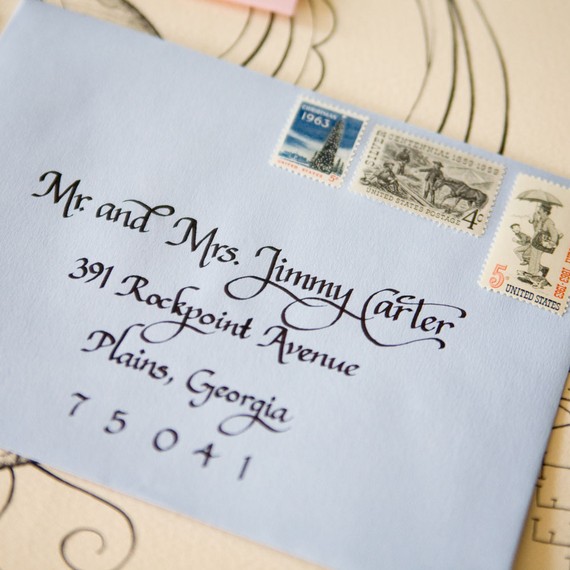We all know calligraphy as the design of letters on a place card, envelope, etc., but it is so much more than that. What is written, the placement of words, and the titles given to the subjects play a huge role in calligraphy. When one is addressing his/her wedding invitations, there are several rules of etiquette that must be applied. Here are some examples of the rules you should always abide by when creating formal invitations:
Creating the list of guests
• Put your guests in alphabetical order to make it easier for you or your calligrapher to edit
• Spreadsheets are a great tool for guest lists, but make sure that you can convert and print your list to label format
• Use an easy-to-read font to avoid trouble later on
Basic addressing tips
• ALWAYS spell out titles, such as Reverend, Colonel, Doctor, Lieutenant, etc.
• NEVER spell out Mr. and Mrs.
• Ms. is used for women over 21, while Miss is used for women under 21
• Spell out and; don’t use the ampersand (&)
• Write out the guests’ full names, which means that middle names, titles, etc. should be included
• If a middle name can’t be found, then the middle initial is completely fine
• The whole address should also be fully spelt out, except for the house number; this includes cities, states, and any words such as road, street, boulevard, etc.
Inner envelope addressing rules
• Usually used for formal occasions
• It is not necessary to use designations (junior, senior, II, IV, etc.), first names, or middle names
Specific guest addressing details
• Children under 18 may be added to the inner envelope of their parent’s invitation (first names only)
• If inner envelopes are not being used, the children’s first names may be placed underneath the parents on the outer envelope
• Children over 18 should receive their own invitation
• If two siblings over 18 are living together, their full names shouldn’t be written side by side, but as shown:
Miss Cheryl Elizabeth Smith
Miss Katie Ashley Smith
• Couples with different last names should be written just as the example above; the woman’s name can be written first, or the person that you are closer to can be written first
These are only a few of the many different etiquette rules. If you wish to read more about the rules of calligraphy, check out “No Regrets”, a guidebook written by Carrie Shuping. It can be found on www.calligraphybycarrie.com.
Credits: Carrie Shuping of Calligraphy by Carrie & Madison Zampa











